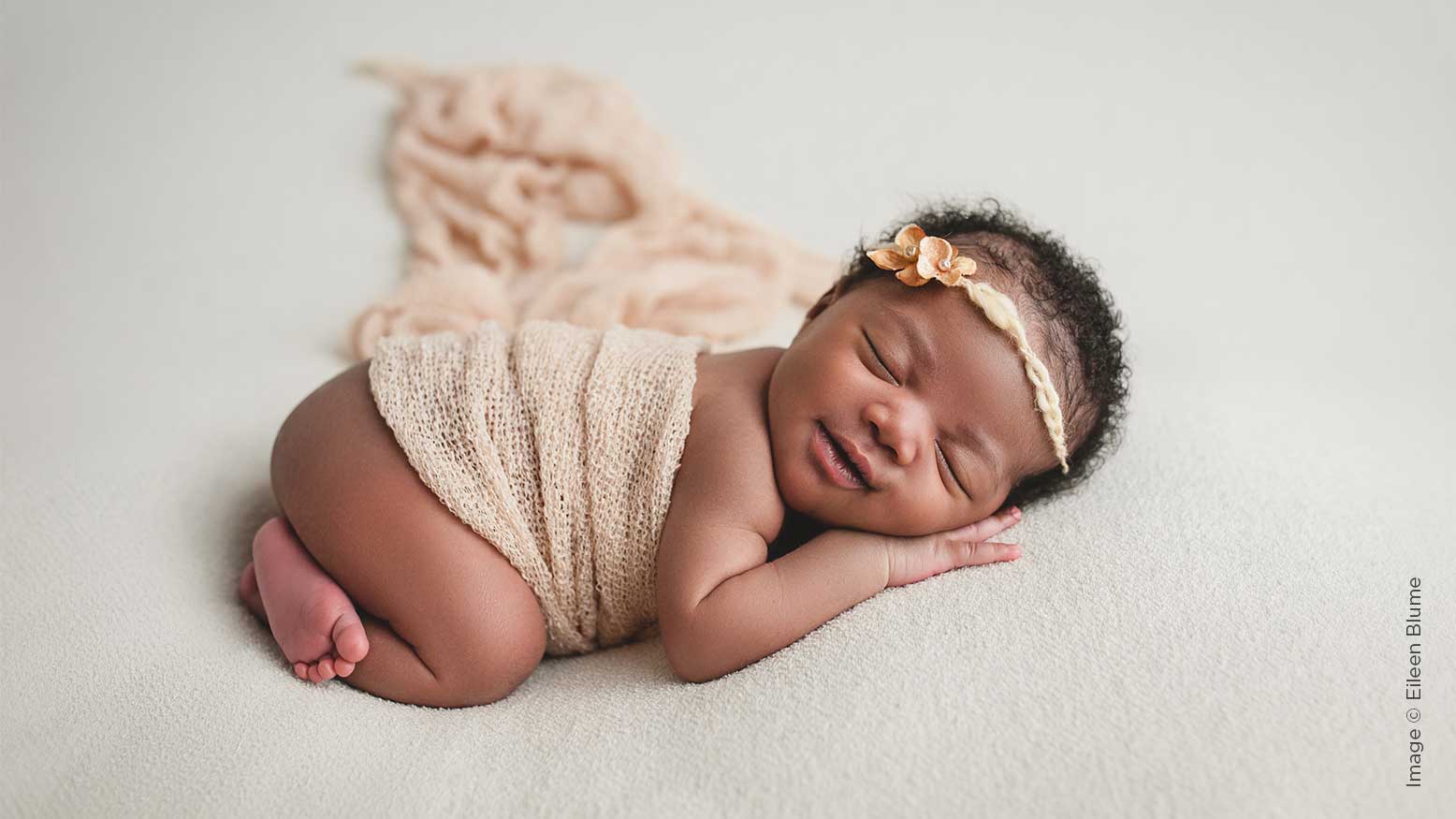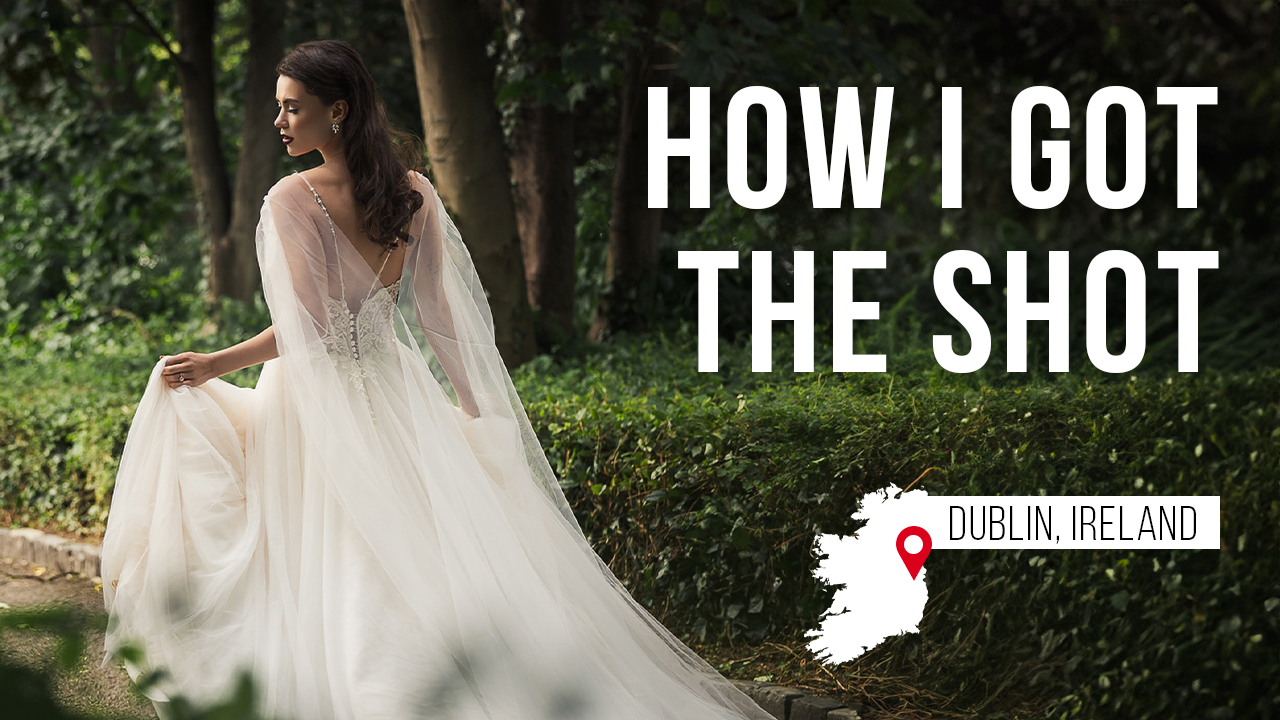Studio Workflows for Smoother Newborn Sessions with Eileen Blume
A Series of Unfortunate (Newborn) Events
Your client has just arrived 30 minutes early for her baby’s newborn session and you are nowhere near finished setting up. After hastily greeting them at the door, you scramble, trying to think of where in the world to start.
Your client begins taking her baby’s clothes off, and the baby is wailing because it is chilly in the room. You spot the beanbag poser from the corner of your eye, and decide to begin the shoot there. You throw a single blanket on top of the beanbag, and your client hands over her naked baby.
Now you place the baby on the blanket and she sinks in the middle. You grab some towels and receiving blankets and stuff them underneath the blanket to prop the baby up on the beanbag. Meanwhile, the baby is crying and you spend the next 10 minutes trying to soothe her.
Finally you get her settled, but now she is not posed correctly, and the blanket she is lying on has shifted. You stuff more washcloths under the baby, desperately trying to smooth the backdrop. After 10 more minutes, you have something that slightly resembles a decent newborn portrait. But as soon as you pick up your camera to capture the shot, the baby pees all over herself.
Does any of this sound familiar? I know most of us newborn photographers have experienced a few—or, let’s face it, all—of these misfortunes. The good news is that you can help prevent these problems by implementing some simple techniques to streamline your newborn sessions.
Layering materials, rotating through stations and transitional posing all contribute to a smoother studio workflow.
1. LAYERING MATERIALS
The beanbag poser is one of the first items we newborn photographers buy, but that doesn’t mean any of us automatically knows how to use it. My newborn sessions took the longest when I didn’t layer my materials properly. I wasted so much time stuffing and restuffing, trying to get the baby propped up. At the beginning of the article, my mistake was using a single blanket. This will easily slip and shift around, with nothing underneath to act as a grip. The solution is to layer blankets—lots of them—on top of a stuffed beanbag.
BLANKETS
Start with a thick king- or queen-size blanket folded into a rectangle shape that covers the surface of the beanbag. This large blanket acts as a good base for posing. Next, if you have a flokati (shag rug), turn it upside-down and place it on top of the folded blanket. If you don’t have a flokati, just use a thick blanket (not very plush), and layer six to eight backdrop blankets on top (my favorite blankets are from FreebirdShoppe.com). The multiple layers make the surface look smooth and less likely for any stuffers (like towels and washcloths) to become visible as they would behind a single thinner fabric. The last two or three blankets you place on top are your backgrounds, so plan accordingly when layering.
STUFFERS
Besides using rolled-up towels and cloth diapers, I’ve found that the Newborn Cloud Posing Pillows (NewbornCloud.com) work incredibly well as stuffers. They don’t slip and they retain their shape, making it easy to transition between poses. If you find that constantly shifting materials eats up your shoot time and patience, you’ll want to invest in stuffers like the Posing Pillows, which give a consistent contoured shape and stay put.
PEE PADS
But what happens when the baby pees or poops on the top blanket? The answer is pee pads. I use the Four Paws X-Large Wee Wee Pads, which you can order from Amazon. The key is to place a pee pad underneath every couple of blankets. If you place it under just one blanket, the shape of the pad tends to show through, especially if the backdrop is a little sheer. Just start with your main backdrop blanket you’ll be shooting against, then layer in a “liner” blanket, then the pee pad. Underneath this trio, have another backdrop blanket, a liner blanket and then a pee pad. If there is an accident, that first pee pad keeps all the blankets below spotless. Simply remove the soiled blankets on top, and you’re ready to go again. No more switching out blankets to replace with new ones, which wastes time. Layer and shoot.
STATIONS
Stations help me determine the order in which to take portraits. When a client arrives (or when you arrive at your client’s home), the first thing you should do is greet her, bring her to the sitting area and, if you’ve prepped her beforehand, instruct her to give her baby a full feeding. When the baby is full and at her sleepiest, take her through the different stations.
BEANBAG
I start every shoot with solo shots of the baby. When the baby is nice and sleepy, I’m able to mold her easily into cute positions and pose her on the beanbag. Starting with the beanbag also allows time for parents and siblings who are being photographed to get settled, changed and freshened up for when it’s their turn.
FLOOR
Right next to my beanbag are my floor drops. This is where I do my bowl, bucket and shooting-downward shots. With the floor station set up next to the beanbag, you don’t have to move your studio light very far. I gradually add on other family members, such as mother with baby, and then siblings with baby for the lying-on-back poses. If you have hard floors like I do, add a cushioned layer, like this foam egg crate (bit.ly/egg-crate-twin), underneath the baby.
BACKDROP
After I’ve gotten all my individual portraits of the baby, I move on to family group portraits against a backdrop. These include parents with baby and the family with siblings. I use a neutral-colored, seamless paper backdrop that coordinates with any colors the family is wearing, and it’s large enough (107 inches) that I don’t have to Photoshop the background (bit.ly/savage-backdrop). If you don’t have a backdrop or a light, just find a clutter-free spot in front of a large window. Designate that area your station for family portraits.
TRANSITIONAL POSING
To simplify posing, start with the easy shots first and end with the harder ones as time allows. This allows you to create much more variety than if you had gotten stuck and frustrated on difficult poses—with not much to show for it.
When taking individual portraits of a baby, I usually start with comfortable tucked positions. With the baby belly-down, you can get a variety of poses all while he is in this position (taco pose, bum up, chin on hands, etc.). After you feel you’ve gotten enough tucked and cozy shots, move on to poses with the baby on his back. Lastly, hit those harder poses that require assistance (holding the baby’s head for the froggy pose) or compositing (combining two or more images to make a single picture).
If at any point the baby is being fussy and won’t calm down easily, move on to wrapped poses to keep up the momentum. Remember, you’re not there just to take pretty pictures of your client’s newborn. You’re also there to assure your client that you know what you’re doing and you’ve got the session under control.
CONCLUSION
Layer your blankets, rotate through stations and start with the easy poses. The last thing you or your client wants is a long drawn-out newborn session where everybody (including the baby) ends up frustrated and tired. With systems in place before you begin your shoot, you ensure your clients will have an enjoyable experience that they will feel good about.




